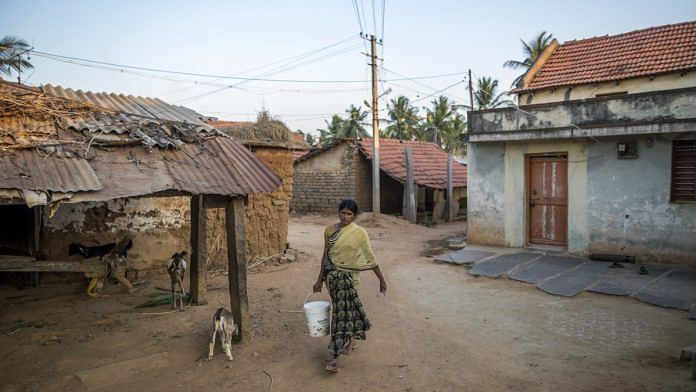The gender gap in India has always been skewed, with most health indicators, literacy levels and employment statistics favouring men. As India embarks on its largest immunisation drive against Covid-19, this gap is widening and must be addressed.
According to data from the CoWin dashboard, as of 19 August 2021, about 57 crore vaccines have been administered, more than the entire population of some countries. Yet women comprise only about 46 per cent of the total population vaccinated in India.
As a public health professional, I’ve seen this discrepancy before. During my tenure at the Immunization Technical Support Unit (ITSU) to the Government of India, I visited most of the states for reviews, surveys and programmatic assessments relating to the Universal Immunisation Programme. Hailed as the largest immunisation programme in the world, it reaches 2.6 crore children and 3 crore pregnant women annually with life-saving vaccines. In 2015, I founded the non-governmental organisation Samarpann to address socio-economic issues at the grassroots levels. Since Covid-19 struck, we have been working to create awareness and access to the vaccine for women.
During this work, I’ve spoken to numerous women — mothers, caregivers and frontline workers in urban and rural settings. What I found is that women’s health is often neglected for multiple reasons and that these challenges have been exacerbated by the pandemic.
Also Read: Equal access to vaccines isn’t just about health. It’s also about economic recovery
What is preventing women in India from getting Covid-19 vaccines?
Too often women are not the decision-makers of their health. Their fathers, husbands and sons script how they approach their health. According to the National Family Health Survey-4, more women would let their husbands decide about their healthcare than take the decisions themselves.
In addition, women who do not go out to work are often not considered at risk of getting Covid. Adding to this challenge, immunisation sessions are held during the day when many are busy with household chores or taking care of their children. Women who are daily wage earners earn between Rs 150 and Rs 230 per day and cannot afford to miss a day’s work. Getting two square meals a day is more essential for them than protecting against a disease they haven’t contracted yet.
Compounding these challenges, the immunisation sites or the mobile camps are often located far from their homes. Since many women are dependent on men for mobility, this would mean both of them missing work. Vaccine shortages add to the hesitancy because there is no assurance of a shot despite travelling long distances and taking days off.
The fear of adverse effects from the vaccination is another roadblock. Many women are concerned that they will have side effects and miss additional days of work. Moreover, in rural settings, paracetamol is seldom given, which means if they did have a fever after the vaccine, they wouldn’t be able to treat it.
Another difficulty is low rates of digital literacy and poor access to smartphones, making it a challenge for women to book appointments at vaccinations sites where online registration is mandatory.
Also Read: India’s last-mile Covid-19 responders are leading the way to a just recovery
Ways to increase vaccination
At Samarpann we are working with panchayats, local school teachers and community leaders to address fears and hesitancy in the population. Women have come up to me asking if immunisation is safe during menstruation, and if they can take it during pregnancy or when trying to conceive. Vaccination is absolutely safe during pregnancy and has no linkages to affecting the fertility of a woman or man.
There is a mammoth task ahead for the Narendra Modi government and society to bridge the immunisation gap. The government needs to invest in behaviour change communications — with personal communication from doctors, frontline workers and local community leaders. The government also needs to organise more camps near villages to make immunisation sites accessible and offsite registration in urban areas common.
There must also be strategies of providing non-financial incentives to compensate for the loss of work for poor families who get themselves immunised. For example, Samarpann is providing 10 days of ration and one year of stationery to children whose parents get immunised.
Most importantly, women need to be empowered. This holds true not only for Covid-19 immunisation, but for improving each aspect of their health, education and livelihood. Empowerment will come with financial independence, changing mindsets, equal opportunities, and breaking of the social barriers that mar their progress. Society cannot afford to leave women behind.
The author is a public health and social impact professional with over 14 years of experience working in policy, advocacy, research and implementation. A Chevening fellow from the University of Oxford, she currently leads the Health Care Vertical at World Economic Forum, India and heads her NGO, Samarpann. She tweets @DrRumaBhargava. Views are personal.



